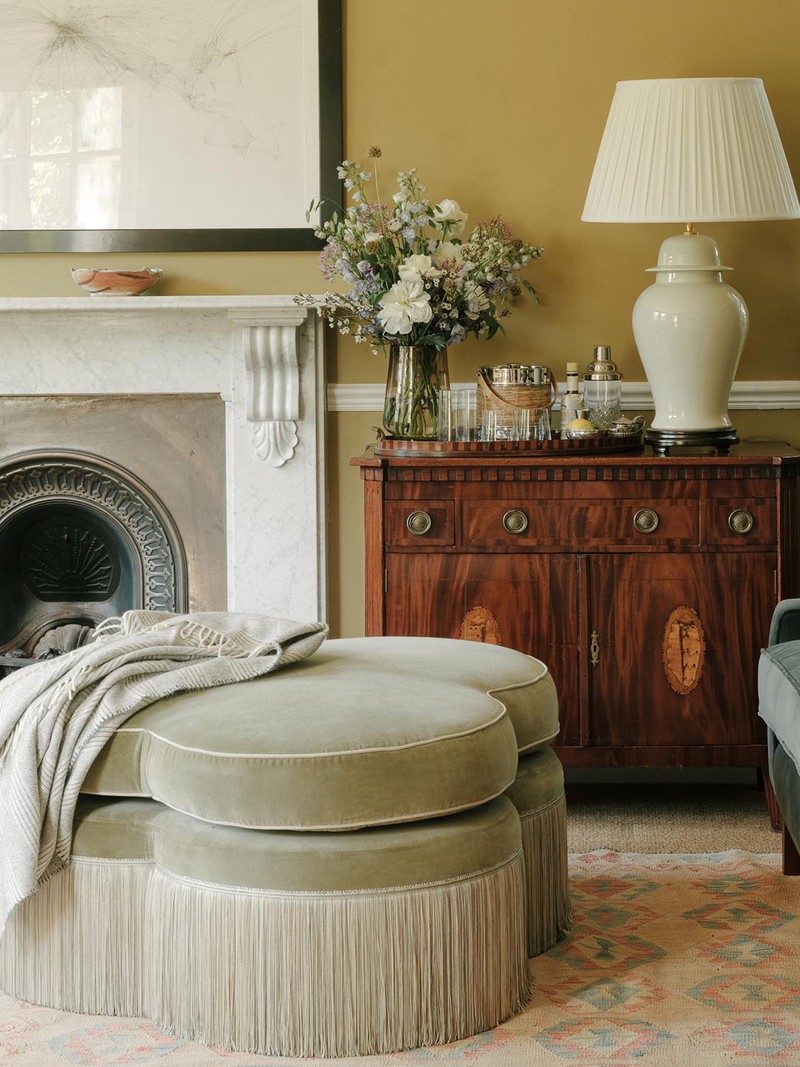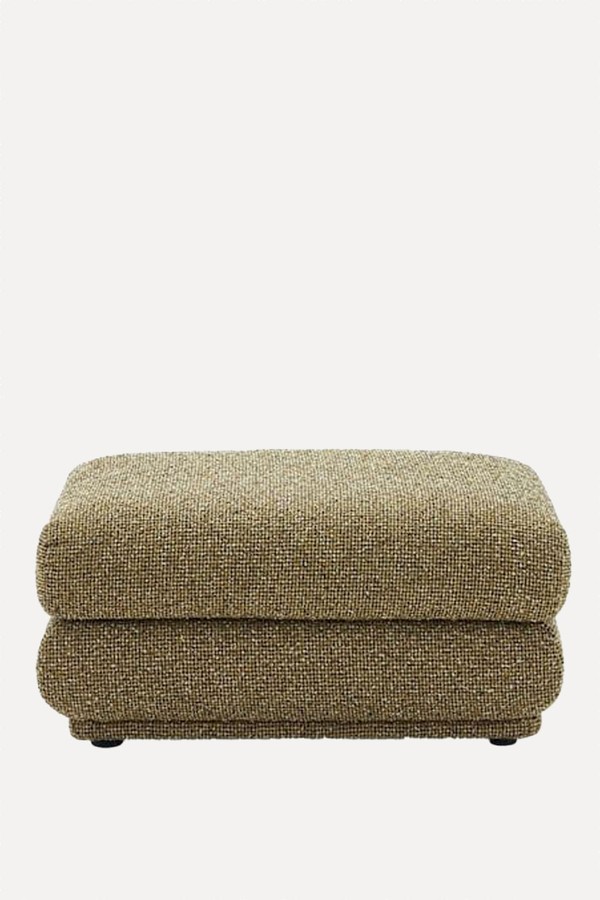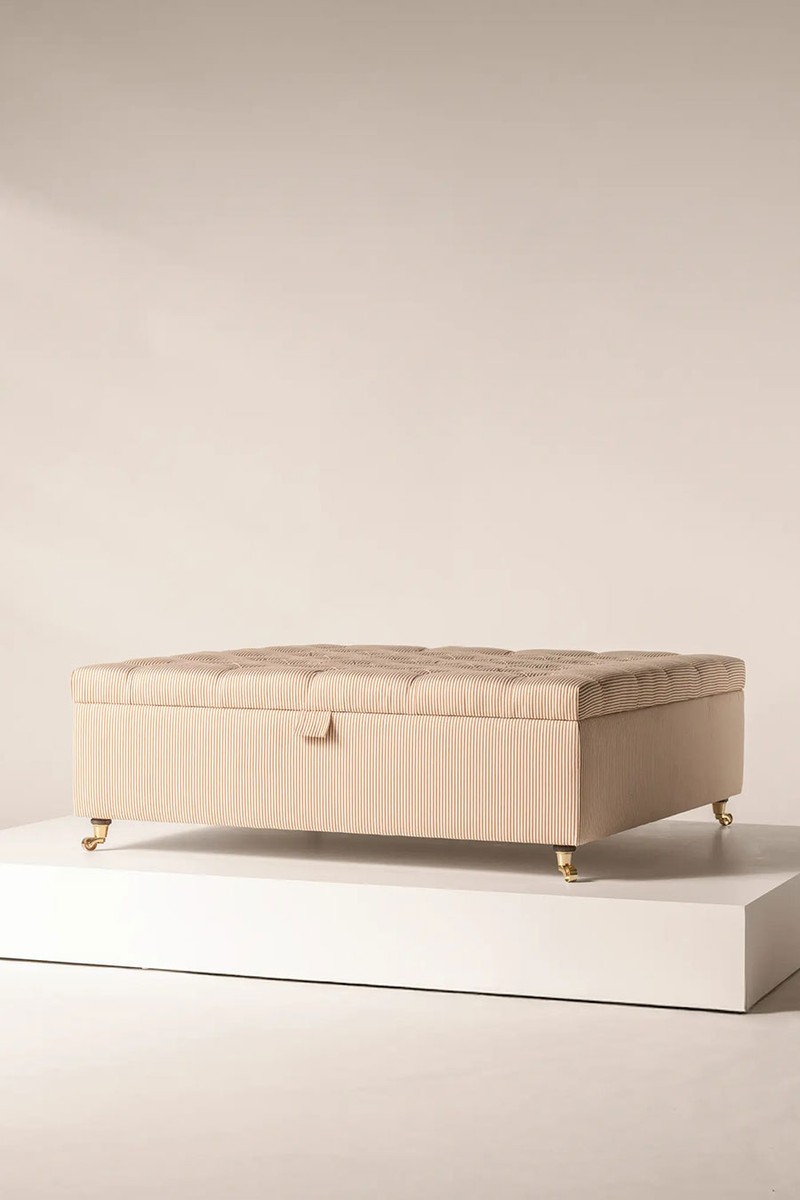
How To Choose An Ottoman
When choosing an ottoman, what’s the first thing to consider?
Getting the scale right is key – an undersized ottoman can feel lost. I always start by considering its role in the room, especially if it will double as a coffee table. In that case, go for a generous proportion, leaving at least 400mm between the ottoman and surrounding seating. This keeps it purposeful within the scheme while still allowing plenty of space to move around comfortably.
What are your go-to fabrics or textures for ottomans?
An ottoman is one of the most frequently used pieces in a living room, so practicality must come first. I often recommend our stain-resistant velvets – they offer the depth and character of a traditional velvet but are durable enough to withstand daily life and the occasional spill. For a lighter, more textured look, bouclé and linen blends can work beautifully, though I tend to use them in spaces where the ottoman isn’t doubling as a coffee table. The key is selecting a fabric that not only complements the scheme, but also withstands the reality of how the room is used.
How do different shapes change the way an ottoman works in a space?
Shape plays a huge role in an ottoman’s impact. A round design complements curved sofas, creating a softer focal point – especially when styled as a coffee table. Square or rectangular pieces add structure and symmetry, grounding a seating area and balancing a larger room. I’m also a fan of pairing two square ottomans side by side: they’re flexible, can be separated for extra seating, and give the arrangement a polished, considered feel.
Ottomans often double up as storage - what are the best solutions you have you seen?
Our Bridstow Ottoman features a discreet lift-up lid with concealed storage, perfect for keeping blankets, cushions or even board games tucked away when they’re not in use. I love storage ottomans because they solve a very real need without compromising on design – everything is hidden, but always within easy reach. It’s a simple way to keep a living room feeling calm and uncluttered.
Do you think ottomans work better as a central coffee-table alternative or as an accent piece?
An ottoman can pull double duty, depending on your space and lifestyle. Used as a coffee-table alternative, it softens a seating area and instantly makes it feel welcoming – add a tray for practicality, and you’ve got the best of both worlds. As an accent, it adds depth and texture, whether at the end of a bed, beneath a window, or paired in a larger room. The key is that it feels intentional within the scheme, never an afterthought.
Is an ottoman a good way to inject colour, pattern or personality into a neutral scheme?
It’s a brilliant way because it feels like a lighter commitment than upholstering a main sofa. It can add personality without overwhelming the room – think of it almost as a piece of punctuation. A bold fabric, a playful fringe or even a textured weave can completely shift the mood, while still feeling easy to live with and, if needed, to change down the line.
Visit COLLECTIONSEVEN.STORE
SHOP THE EDIT
























DISCLAIMER: We endeavour to always credit the correct original source of every image we use. If you think a credit may be incorrect, please contact us at info@sheerluxe.com.

